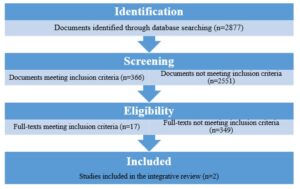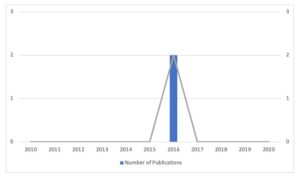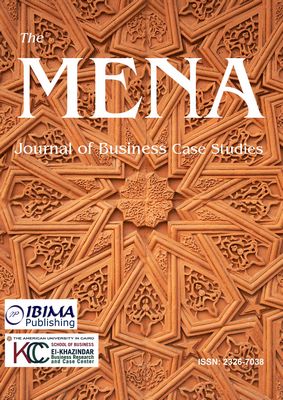Introduction
The investments of technology companies in producing and developing wearable technologies have increased recently to catch the attention of consumers worldwide. Wearable technology is defined as a portable electronic device worn as a private accessory and/or can be integrated into clothes (Ferreira et al., 2021; Lukowicz et al., 2004). The embedded technologies (e.g., biosensors and data communicators) act as data transmitters in specified and accessible sectors of the body. As one of the functions of wearable technologies is to transfer physiological data, such as heart rate, blood glucose, and blood pressure, continuously and without human intervention, they are assumed as useful devices in increasing the quality of health services in the clinical domain. Schroetter (2014) pointed out that “As these wearable devices proliferate in the clinical domain, they have the potential to provide caregivers with the information they need to improve the quality of health care, change and facilitate clinical workflow, manage and treat patients remotely, collect greater health data, and deliver more meaningful healthcare to patients” (as cited in Lu et al., 2016, p. 851).
Many scholars have investigated the key factors involved in the development and implementation of wearable devices (Ahanathapillai et al., 2015; Al-Emran & Ehrenfeld, 2021; Aladren et al., 2016; Baig et al., 2017; Casilari & Oviedo-Jiménez, 2015; Choi & Kim, 2016; Chuah et al., 2016; Fardoun et al., 2017; Ferreira et al., 2021; Jensen et al., 2021; Klaassen et al., 2016; Mejia et al., 2021; Poon & Zhang, 2008; Rodriguez-León et al., 2021; Shin, 2017; Wile et al., 2014; Zheng et al., 2014). Wearable device research in different contexts addressed miniaturization, integration, networking, digitalization, standardization (Poon & Zhang, 2008), comfortable to wear and unobtrusiveness (Zheng et al., 2014), usability, acceptability, user-engagement, user-interaction (Baig et al., 2019), simplicity, reliability, and satisfaction (Klaassen et al., 2016), as the crucial factors in developing and implementing wearable devices. However, most of the research has been conducted in developed countries and only a few studies conducted within the context of developing countries.
Thus, due to the lack of focus on the influential factors on elderly people’s intention to use wearable technologies, in general, and specifically in the context of developing countries like Saudi Arabia, as well as the limited number of models that have been used to assess these factors, the present research aims to contribute to a state-of-the-art study on wearable devices in healthcare within Saudi Arabia. To discover the intention of practitioners, researchers, policymakers, and decision-makers in Saudi Arabia to value new technologies for healthcare as a lifelong plan at both organizational and individual levels, the researchers carried out an integrative review of the related literature. The review scrutinized literature dealing with the factors that could influence elderly people to use or adopt wearable technologies in a Saudi Arabian healthcare context and explored the models used in the identified articles, to provide an identification of relevant research and approaches. To focus on recent work, the review was limited to articles between 2010 and 2020 inclusive. The aim of the review was to answer the following research question:
RQ: What are the incentives and barriers for older Saudi people in their potential to use wearable technologies for their personal healthcare?
This paper has been divided into several major sections. The Methodology section describes the process of identifying the target papers included in the review. This includes the methods used in data collection, inclusion and exclusion criteria, data evaluation, analysis, and a summary of results. The Descriptive Review of the Included Articles section provides detailed reviews of the final articles selected from the review process. Finally, the Conclusion and Future Work section presents the results of the analysis and future recommendations for researchers.
Methodology
To synthesize the findings, the researchers followed Cooper’s (1998) five steps of research synthesis (Cooper, 1998): (1) the problem articulation; (2) data collection; (3) data evaluation; (4) data analysis and interpretation; and (5) the presentation of the results.
Data Collection
The data collection procedure started by searching for published journal articles, that were in line with the study’s aims, from reputable sources, including (1) review articles, (2) bibliographic databases, (3) electronic databases, and (4) academic journals. Specific keywords were employed as benchmarks to search the related articles in the scholarly sources. The subject words and primary keywords employed in combination with ‘wearable’ and ‘health’ were: factor, influence, elderly, older, senior, adopt*, accept*, and technolog* (where * represents a wildcard matching to any number of characters). Then, the above-mentioned keywords and Boolean operator (AND, OR, NOT) combinations (e.g., wearable AND health AND accept*) were used in reputable electronic bibliographic databases, including (1) IEEE Xplore, (2) Arts & Humanities Citation Index, (3) Emerging Source Citation Index, (4) Academic Search Ultimate, (5) PubMed, (6) Scopus, and (7) Social Science Citation Index.
Inclusion and Exclusion Criteria
The initial search results revealed 2877 related documents based on the specified keywords. However, to be appropriate to the aim of the current study, the researchers identified inclusion and exclusion criteria:
(1) The publication date of the articles should be between 2010 – 2020. The last decade has been selected based on the rise of wearable technologies as the aim was to explore the latest progress in health. (2) The publication study location must be in the context of Saudi Arabia. (3) The articles should be published in a journal with a qualitative, quantitative, or mixed-methods, research design. (4) The published paper should be in English. Finally, (5) the participants of the included article should be older adults.
Data Evaluation
Several articles review phases were employed to accept eligible papers as outlined in figure 1 adopted from Tafazoli, 2021). In the Identification phase, the researchers identified possible articles based on the search keywords and the five inclusion and exclusion criteria. This resulted in 2877 identified articles.
In the following Screening phase, identical and inapplicable documents were eliminated after reading the titles and articles’ keywords. This resulted in eliminating 2551 articles and left 366 remaining relevant articles.
In the Eligibility phase, the abstracts of the 366 articles were read and 349 articles removed as not meeting inclusion/exclusion criteria. This resulted in 17 remaining relevant articles.
In the final Included phase, the 17 articles were read fully entirely to find out which were aligned with the inclusion and exclusion criteria. From this, 15 were removed as not meeting the inclusion/exclusion criteria. This resulted in only 2 articles that met all inclusion/exclusion criteria.

Fig 1. Data evaluation phases
Data Analysis
As the small number of included papers was not enough to allow for a meta-analysis review, the researchers decided to conduct an integrative review. For a scientific and unbiased approach, the researchers adopted a categorization template from Tafazoli (2021) to systemize the included papers. Although the influencing factors for the uptake of wearable technologies was a major focus of the current review, the researchers were also interested in finding out about the models and theoretical frameworks applied in the studies. Therefore, the categorization template contained:
(1) The study aim
(2) Keywords
(3) Research questions
(4) Wearable technology
(5) Data collection
(6) Context of the study (participants, country)
(7) Research design
(8) Theoretical framework/model
(9) Research emphasis
After completing the categorization templates for each included paper, the researchers followed Briks and Mills’ (2011) recommendation on multilevel coding. In this way, based on a grounded theoretical approach, the researchers were able to thematize the findings of each category. In other words, the specified codes were categorized based on their most identical identification and description, which leads to developed individual categories (Strauss & Corbin, 1990).
The next section reports the results obtained from the included articles, focusing on the use of wearable technologies for elderly people in the context of Saudi Arabian healthcare.
Results
Table 2 below shows the final articles for this review, resulting after the Identification, Screening and Eligibility phases of the initial articles with inclusion and exclusion criteria applied. The data analysis revealed that only two articles met the inclusion criteria (Table 2). It is significant that both articles were published in the same year (2016) and by the same authors, one at a conference and one in a journal. The assumption is that they are results reported from a common study.
Table 2: Included articles in the review

As indicated in Figure 2, both of the final articles identified in this review were published in 2016. This indicates that the number of published articles dealing with the factors that might affect elderly people’s use of wearable technology for their healthcare in Saudi Arabia during the last decade was very low. This result emphasized the significance of the focus of the researchers’ attention to this area. In other words, it can be noted that the role of wearable technologies in Saudi Arabia’s health context is an emerging field of research and requires more attention.

Fig 2. Number of publications resulting from the review
Descriptive Review of the Included Articles
This section describes the articles resulting from the review. The first article, Alsulami and Atkins (2016a), investigated the barriers and challenges of using Ambient Assisted Living (AAL) technology in the Kingdom of Saudi Arabia (KSA). The paper categorized the barriers into: human (i.e., resistance to the use of technology and lack of human interaction), technology (i.e., lack of experience to choose the right technology, and awareness of benefits, privacy, security, safety, usability, and interoperability), and financial (i.e., cost) barriers. The paper applied a quantitative approach. Data were collected through an online questionnaire in both Arabic and English languages. The questionnaire consisted of two main sections of demographic information and AAL technologies. The AAL technologies section included a) five-point Likert scale questions (5 items), b) open-ended questions (2 items), c) Yes/No questions (2 items), and d) multi-option questions (4 items).
Out of 420 participants who were selected through the snowball technique, 194 participants completed the questionnaires. All the participants were Saudi Arabian and over 60 years old. Data analysis revealed that 53% of Saudi older adults were worried about their individual privacy and personal health status. Also, 53% of the participants were concerned about their personal data. However, 21% of the participants had no concerns. Moreover, 87% of the participants thought that home safety was the most influential factor that limits the use of AAL technologies. In addition, the usability of wearable technology (65%), its size (57%), and its weight (57%) were other influential factors. Regarding the financial barriers, 25% of the participants confirmed that they would use AAL technologies if there was no cost for them. The remaining influential factors in the application of AAL technologies were the lack of awareness and training (18%), ease of use (5%), family acceptance (13%), health (5%), and respect for the culture (3%).
In the second study, Alsulami and Atkins (2016b) utilized the same methodology, with the same participants (see Alsulami & Atkins, 2016b), to explore the attitudes and perceptions of older adults towards using AAL technologies in the KSA. Data analysis indicated that most participants were interested in using AAL technologies. 64% of the participants used AAL technologies in their daily activities. Moreover, 46% of the older adults had smart devices, such as mobile phones and iPads. Also, 30% of the participants were Internet users, and 24% of the participants preferred to use computers and laptops. Participants also expressed positive perceptions about using technologies as a warning system (93.3%), to immediately contact care by pressing a button (94%), to help to switch off appliances (95%), and to be trained in how to use new technologies (80.5%).
Conclusion and Future Work
The current study aimed at investigating the experiences of using wearable technologies for elderly persons in the context of Saudi Arabia’s healthcare. The integrative literature review showed that only two published research papers tried to investigate barriers that limit the use of health wearable technologies in Saudi Arabia from an elderly person’s perspective.
This review clearly showed the research gap in this area, as evidenced by various factors: a) the small number of publications in this area, especially recent papers, b) the lack of diversity in methodologies and models used in the published papers, c) the lack of variety in the type of wearable technologies used, d) the limited number of factors that have been investigated.
Based on the findings of the current integrative review, the researchers concluded that the need for further investigations on wearable technologies for personal healthcare and wellbeing of older persons in the context of Saudi Arabia is required. We recommend Saudi researchers investigate the possible advantages and disadvantages of wearable technologies for elderly persons’ healthcare. Also, researchers should consider influential factors not apparent in the researched literature, such as privacy, trust, cultural, and contextual factors, and the roles and importance of these factors in the acceptance of wearable technologies in countries with different cultural and social values.
References
- Ahanathapillai, V., Amor, JD. and James, C. J. (2015) ‘Assistive technology to monitor activity, health, and wellbeing in old age: The wrist wearable unit in the USEFIL project’ Technology and Disability, 27(1, 2), 17-29.
- Al-Emran, M., & Ehrenfeld, JM. (2021) ‘Breaking out of the box: wearable technology applications for detecting the spread of COVID-19’ Journal of Medical Systems, 45(2), 1-2.
- Aladren, A., López-Nicolás, G., Puig, L. and Guerrero, J. J. (2014) ‘Navigation assistance for the visually impaired using RGB-D sensor with range expansion’ IEEE Systems Journal, 10(3), 922-932.
- Alsulami, MH and Atkins, AS. (2016a) ‘Elderly Saudi Arabian’s perceptions and attitudes towards using ambient assisted living technologies’ Proceedings of the IIER International Conference, Barcelona, Spain.
- Alsulami, MH. and Atkins, AS. (2016b) ‘Factors influencing ageing population for adopting ambient assisted living technologies in the Kingdom of Saudi Arabia’ Ageing International, 41, 227-239.
- Baig, MM., GholamHosseini, H., Moqeem, AA. et al. (2017) ‘A systematic review of wearable patient monitoring systems – Current challenges and opportunities for clinical adoption’ Journal of Medical Systems, 41, 115.
- Birks, M. and Mills, J. (2011) Grounded theory: A practical guide. Thousand Oaks: Sage.
- Casilari, E. and Oviedo-Jiménez, MA. (2015) ‘Automatic fall detection system based on the combined use of a smartphone and a smartwatch’ PloS one, 10(11), e0140929.
- Chuah, SHW., Rauschnabel, PA., Krey, N., Nguyen, B., Ramayah, T. and Lade, S. (2016) ‘Wearable technologies: The role of usefulness and visibility in smartwatch adoption’ Computers in Human Behavior, 65, 276-284.
- Choi, J. and Kim, S. (2016) ‘Is the smartwatch an IT product or a fashion product? A study on factors affecting the intention to use smartwatches’ Computers in Human Behavior, 63, 777-786.
- Cooper, H. (1998) Synthesizing research: A guide for literature review (3rd ed.). Thousand Oaks: Sage.
- Fardoun, HM., Mashat, AA. and Ramirez Castillo, J. (2017) ‘Recognition of familiar people with a mobile cloud architecture for Alzheimer patients’ Disability and Rehabilitation, 39(4), 398-402.
- Ferreira, JJ., Fernandes, CI., Rammal, HG. and Veiga, PM. (2021) ‘Wearable technology and consumer interaction: A systematic review and research agenda’ Computers in Human Behavior, 118,
- Jensen, M. T., Treskes, R. W., Caiani, E. G., Casado-Arroyo, R., Cowie, M. R., Dilaveris, P., … & Lumens, J. (2021) ‘ESC working group on e-cardiology position paper: Use of commercially available wearable technology for heart rate and activity tracking in primary and secondary cardiovascular prevention—in collaboration with the European Heart Rhythm Association, European Association of Preventive Cardiology, Association of Cardiovascular Nursing and Allied Professionals, Patient Forum, and the Digital Health Committee’ European Heart Journal-Digital Health, 2(1), 49-59.
- Klaassen, B., van Beijnum, BJ. and Hermens, HJ. (2016) ‘Usability in telemedicine systems—A literature survey’ International Journal of Medical Informatics, 93, 57-69.
- Lu TC, Fu CM, Ma MHM, Fang CC, Turner AM. (2016) ‘Healthcare applications of smart watches: A systematic review’. Applied Clinical Informatics, 7, 850–869. http://dx.doi.org/10.4338/ACI-2016-03-R-0042
- Lukowicz, P., Kirstein, T. and Tröster, G. (2004) ‘Wearable systems for health care applications’ Methods of Information in Medicine, 43(3), 232-238.
- Mejia, C., Ciarlante, K. and Chheda, K. (2021) ‘A wearable technology solution and research agenda for housekeeper safety and health’ International Journal of Contemporary Hospitality Management, 33(10), 3223-3255.
- Poon, CC. and Zhang, Y. T. (2008) ‘Perspectives on high technologies for low-cost healthcare’ IEEE Engineering in Medicine and Biology Magazine, 27(5), 42-47.
- Rodriguez-León, C., Villalonga, C., Munoz-Torres, M., Ruiz, J. R., & Banos, O. (2021) ‘Mobile and wearable technology for the monitoring of diabetes-related parameters: Systematic review’ JMIR mHealth and uHealth, 9(6), e25138.
- Shin, DH. (2017) ‘Conceptualizing and measuring quality of experience of the internet of things: Exploring how quality is perceived by users’ Information & Management, 54(8), 998-1011.
- Strauss, A. and Corbin, J. (1990) Basics of qualitative research: Grounded theory procedures and techniques. Thousand Oaks: Sage.
- Tafazoli, D. (2021). Language teachers’ professional development and new literacies: An integrative review. Aula Abierta, 50(2), 603-614. https://doi.org/10.17811/rifie.50.2.2021.603-614
- Wile, DJ., Ranawaya, R. and Kiss, ZH. (2014) ‘Smart watch accelerometry for analysis and diagnosis of tremor’ Journal of Neuroscience Methods, 230, 1-4.
- Zheng, YL., Ding, XR., Poon, CCY., Lo, BPL., Zhang, H., Zhou, XL., … and Zhang, YT. (2014) ‘Unobtrusive sensing and wearable devices for health informatics’ IEEE Transactions on Biomedical Engineering, 61(5), 1538-1554.






